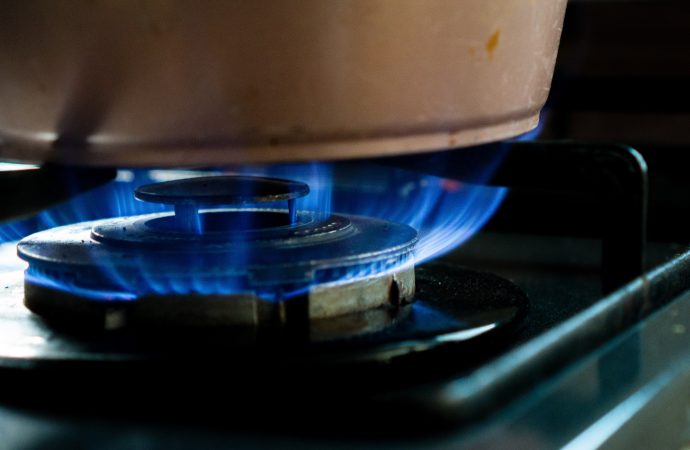Are you in the market for a new stove but unsure which type to invest in? With concerns about safety and environmental impact, it can be overwhelming to decide between a gas or electric stove. Let’s dive into the pros and cons of each option so you can make an informed decision that fits your
Are you in the market for a new stove but unsure which type to invest in? With concerns about safety and environmental impact, it can be overwhelming to decide between a gas or electric stove. Let’s dive into the pros and cons of each option so you can make an informed decision that fits your lifestyle and values. Whether you’re a home cook or just looking to upgrade your appliance game, this post will help guide you towards the best choice for your needs.
What are Gas Stoves?
Electric stoves are becoming more popular, but they’re not without their risks. Gas stoves, on the other hand, have been around for a long time and are considered safer.
Here’s why:
1) The flue gas from an electric stove can contain harmful emissions such as carbon monoxide and nitrogen oxide. These gases can cause health problems if they’re inhaled.
2) An open flame on a gas stove produces toxic fumes that can be dangerous if you breathe them in. This is especially true if you have asthma or other respiratory conditions.
3) Electric stoves also require periodic maintenance, something that gas stoves don’t usually need. This includes checking the heat elements and the wiring, among other things.
4) In some cases, electric stoves have malfunctioned and caused fires. Gas stoves have never caused a single fire in history!
What are Electric Stoves?
Electric stovetops are one of the most popular options for home cooks, and for good reason. They tend to be more energy-efficient than gas stoves, and they release less air pollution—both of which are good for the environment. However, there are a few things to keep in mind if you’re considering an electric stove. First, make sure you have enough space on your cooktop to accommodate an electric cooktop. Second, be aware that some electric stoves use more electricity than others—so if you’re trying to cut down on your power consumption, make sure to choose one with lower wattage ratings. Finally, be aware that electric stoves can occasionally experience technical issues; if this happens, don’t hesitate to call your warranty provider or manufacturer for assistance.
How Gas Stoves Work
Gas stoves are a popular choice for many homeowners because they are generally considered to be more safe than electric stoves. While there are some safety concerns with all types of stoves, gas stoves tend to be less dangerous than electric stoves.
One of the biggest safety concerns with electric stoves is that they can start fires if they catch on fire. This is especially true of models that use flammable materials like propane or butane to cook with. In contrast, gas stoves use natural gas or LP gas as their cooking fuel, which is a much safer option.
Another safety concern with electric stovetops is that they can be difficult to keep clean. With gas stovetops, all you need is a little bit of soap and water to keep them clean.
How Electric Stoves Work
If you’re interested in learning about the different types of stoves and how they work, your options are pretty broad. Here’s a rundown of each type and what distinguishes them.
Gasoline-powered stoves: These days, these are the most popular type of stove, because they’re affordable and easy to use. You fill up the tank with fuel (usually gasoline) and light it with a match or an open flame. The fumes from the gas create heat which cooks your food. However, these stoves have several drawbacks: They’re dangerous if something goes wrong with the engine (they can explode), they produce a lot of smoke and carbon monoxide, and they emit harmful toxins into the air when they burn.
Electric stoves: These come in a variety of types, but all work basically the same way. You plug them in to an electrical outlet and turn them on by hitting a button or flipping a switch. They produce very little smoke and no carbon monoxide, so they’re much safer than gas-powered stoves. One downside is that they tend to be more expensive than gas stoves.
Propane-powered appliances: Propane is also used as fuel for some electric stoves, but it produces less heat than gasoline or electricity does. So if you want to cook using this type of stove, you either have to preheat it beforehand or use lower temperatures (which can mean longer cooking times). Propane-powered appliances also have
Pros and Cons of Gas and Electric Stoves
Gas stoves are often thought of as being safer than electric stoves because they use gas, which is a chemical compound that does not produce CO2 emissions. However, electric stoves can be just as safe if they’re used properly. Here are the pros and cons of each type of stove:
Pros of Gas Stoves:
• They use less energy than electric stoves, so they’re environmentally friendly.
• They’re easy to operate and clean.
• They have a wide variety of types and brands, so you’re sure to find one that fits your needs.
Cons of Gas Stoves:
• They can be more expensive than electric stoves.
• Some people find the smell of gas unpleasant.
Which Is Safer for You and the Environment?
Electric stoves are usually seen as being more environmentally friendly, because they produce fewer emissions than gas stoves. However, gas stoves can actually be more energy-efficient, especially if you use them correctly. So which is safer for you and the environment?
The Environmental Protection Agency (EPA) has found that when it comes to overall emissions from your home, a gas stove is actually less harmful to the environment. In fact, an electric stove may actually produce more emissions in some cases. This is because electric heaters often rely on electricity from the grid, which can create more pollution when generated from dirty power plants.
However, if you’re using a natural gas stove or fireplace insert, burning natural gas produces significantly lower levels of pollutants than burning either propane or gasoline. So while an electric stove may be less harmful to the environment in terms of overall emissions, using a natural gas stove will definitely be healthier for your air quality and wallet.
Conclusion
It can be difficult to make a decision when it comes to choosing the right stove for your home. Fortunately, our experts have weighed in with their opinions on which is safer and more environmentally-friendly: gas or electric? In general, gas stoves release less harmful fumes into the air than electric ones, but there are some exceptions. For example, an electric oven that uses convectional cooking technology will produce significantly more emissions than a traditional gas stove. Ultimately, what’s most important is to choose a stove that fits within your lifestyle and protects both you and the environment. So whether you go with a gas or an electric model, just be sure to read the manufacturer’s instructions carefully before making any purchases!





















Leave a Comment
Your email address will not be published. Required fields are marked with *